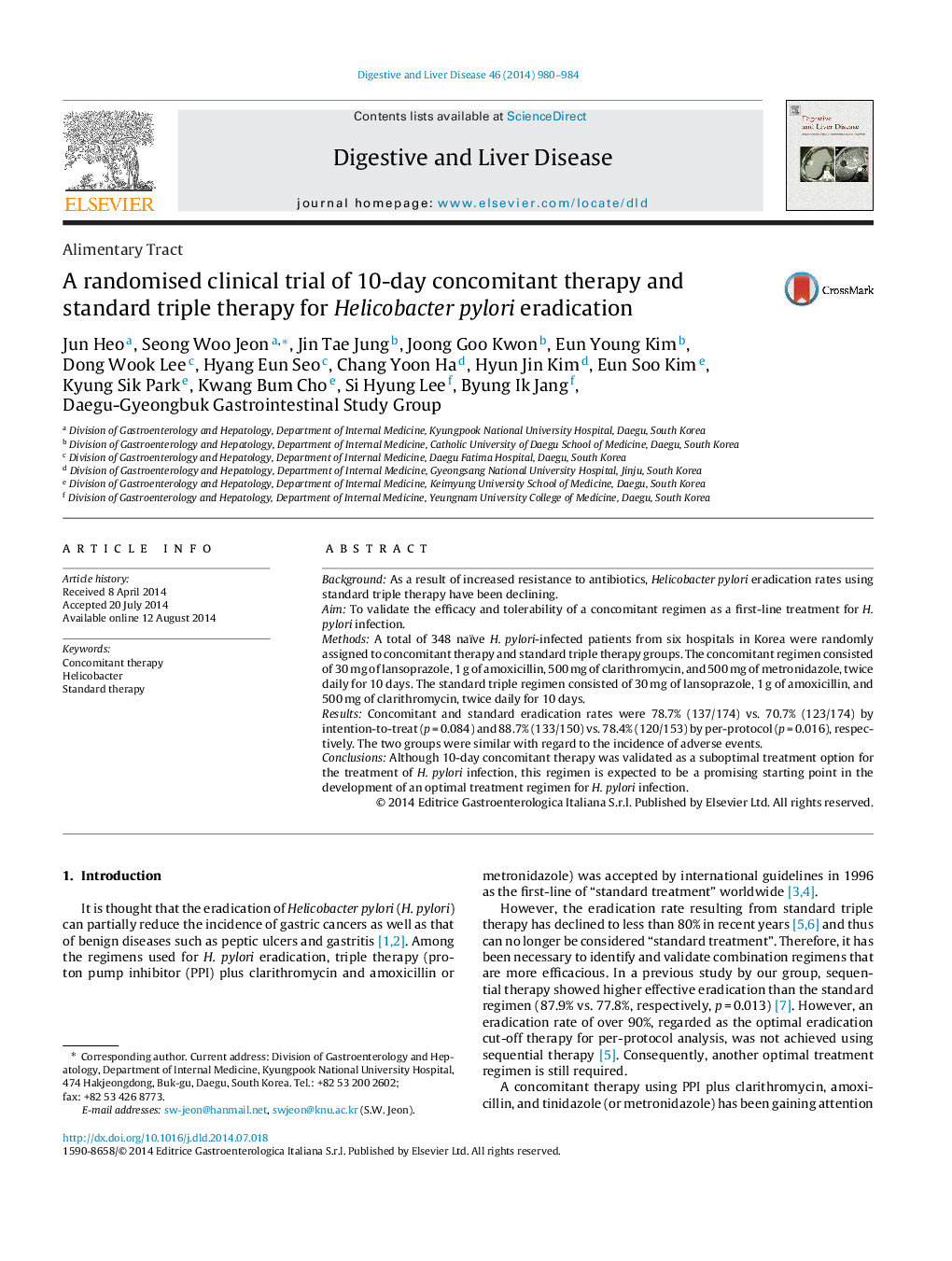| Article ID | Journal | Published Year | Pages | File Type |
|---|---|---|---|---|
| 3261636 | Digestive and Liver Disease | 2014 | 5 Pages |
BackgroundAs a result of increased resistance to antibiotics, Helicobacter pylori eradication rates using standard triple therapy have been declining.AimTo validate the efficacy and tolerability of a concomitant regimen as a first-line treatment for H. pylori infection.MethodsA total of 348 naïve H. pylori-infected patients from six hospitals in Korea were randomly assigned to concomitant therapy and standard triple therapy groups. The concomitant regimen consisted of 30 mg of lansoprazole, 1 g of amoxicillin, 500 mg of clarithromycin, and 500 mg of metronidazole, twice daily for 10 days. The standard triple regimen consisted of 30 mg of lansoprazole, 1 g of amoxicillin, and 500 mg of clarithromycin, twice daily for 10 days.ResultsConcomitant and standard eradication rates were 78.7% (137/174) vs. 70.7% (123/174) by intention-to-treat (p = 0.084) and 88.7% (133/150) vs. 78.4% (120/153) by per-protocol (p = 0.016), respectively. The two groups were similar with regard to the incidence of adverse events.ConclusionsAlthough 10-day concomitant therapy was validated as a suboptimal treatment option for the treatment of H. pylori infection, this regimen is expected to be a promising starting point in the development of an optimal treatment regimen for H. pylori infection.
